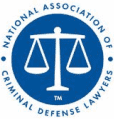The Importance of Accident Reconstructionists in Chicago Truck Accident Cases
Picture a massive 18-wheeler jackknifing on a Chicago highway during the middle of rush hour, leaving a trail of destruction in its wake and lives forever changed. In the aftermath, accident reconstructionists become the unsung heroes, using cutting-edge technology and expertise to unravel the complex factors leading to commercial trucking accidents.
These forensic engineers and crash investigators act as detectives of the roadways, piecing together what really happened. Their work can be pivotal in Chicago truck crash cases, potentially turning the tide of justice for those affected by these devastating collisions.
The Unique Challenges of Trucking Accident Cases in Chicago
Before we delve into the specifics of accident reconstruction, it’s important to understand why semi-truck accidents present such unique challenges in the legal arena. These cases are far from your average fender bender, and here’s why:
- Size and Weight: Tractor-trailers can weigh up to 80,000 pounds when fully loaded, which is roughly 20 times heavier than the average passenger vehicle. This massive size difference between trucks and passenger vehicles often results in catastrophic outcomes during collisions, with the physics of such impacts creating devastating force multipliers that can completely destroy smaller vehicles on impact.
- Regulatory Maze: The trucking industry is governed by a complex web of federal and state regulations that encompasses every aspect of commercial transportation. From hours-of-service rules to cargo securement standards, and maintenance requirements to driver qualification protocols, navigating these regulations requires specialized knowledge and extensive experience with both state and federal transportation laws.
- Multiple Liable Parties: In a trucking accident, potential liability can extend far beyond just the driver, creating a complex web of responsibility and legal relationships. The trucking company, vehicle manufacturer, cargo loader, maintenance providers, parts manufacturers, road maintenance entities, and even third-party contractors could all be potentially responsible, requiring a thorough investigation into each party’s role in the incident.
- Severe Consequences: Due to the sheer force involved in big rig crashes, injuries are often severe, and fatalities are not uncommon. This raises the stakes significantly in legal proceedings, leading to more complex medical evidence, higher damage calculations, and more intense scrutiny of all aspects of the case by both sides of the litigation.
The Role of an Accident Reconstructionist in Chicago Trucking Accidents
Here’s a breakdown of their key responsibilities:
- Evidence Gathering: The reconstructionist’s work often begins at the crash scene itself. They meticulously document and collect physical evidence, from tire marks on the pavement to the final resting positions of vehicles. Every piece of debris tells a story, and these experts know how to read it. Beyond the immediate scene, they also analyze vehicle damage patterns, interview witnesses, review police reports, and examine road conditions and environmental factors that might have contributed to the accident.
- Data Analysis: Modern trucks are equipped with various electronic devices, including Electronic Logging Devices (ELDs) and “black boxes” similar to those found in aircraft. Accident reconstructionists are adept at interpreting this data, which can provide crucial information about vehicle speed, braking patterns, and driver actions in the moments before impact. They also analyze maintenance records, driver logs, GPS tracking data, and communication records between drivers and dispatch to build a comprehensive timeline of events.
- Scientific Application: Using principles of physics and engineering, reconstructionist calculate critical factors such as impact forces, vehicle trajectories, and stopping distances. This analysis helps determine whether a truck driver had sufficient time to react or if mechanical failures played a role in the crash. They also employ advanced mathematical models to account for variables like road friction, weather conditions, vehicle weight distribution, and the mechanical properties of different vehicle components.
- Visual Reconstruction: To help judges and juries understand complex accident dynamics, these experts often create detailed computer simulations or scale models of the crash. These visual aids can be instrumental in clarifying the sequence of events. They utilize state-of-the-art 3D modeling software, photogrammetry, and animation techniques to create accurate, compelling visualizations that can demonstrate everything from sight lines and blind spots to the physics of the collision itself.
- Expert Testimony: As qualified experts in their field, reconstructionists often play a key role in legal proceedings by providing clear, objective explanations of complex technical concepts to judges and juries. They prepare detailed reports, create demonstrative exhibits, and testify under oath about their findings, methodology, and conclusions. Their expertise helps establish the scientific basis for determining liability and can be instrumental in achieving fair settlements or favorable verdicts.
| Accident Reconstructionist Responsibilities | Description |
| Evidence Gathering | Document and collect physical evidence, analyze vehicle damage, interview witnesses, review police reports, examine road conditions and environmental factors. |
| Data Analysis | Interpret data from ELDs and black boxes, analyze maintenance records, driver logs, GPS data, and communication records to build a timeline of events. |
| Scientific Application | Calculate impact forces, vehicle trajectories, stopping distances using physics and engineering principles, and employ mathematical models to account for variables. |
| Visual Reconstruction | Create computer simulations or scale models using 3D modeling software, photogrammetry, and animation techniques to clarify the sequence of events. |
| Expert Testimony | Provide clear, objective explanations of technical concepts in legal proceedings, prepare reports, create exhibits, and testify under oath about findings and conclusions. |
Key Areas of Analysis in Trucking Accident Reconstruction
The work of a vehicular impact analyst in a trucking accident case is multifaceted, touching on various critical aspects of the collision. Here are some of the key areas they focus on:
Determining Vehicle Speeds and Trajectories
One of the most fundamental questions in any accident is: How fast were the vehicles moving? In truck accidents, this becomes even more crucial due to the massive momentum involved. Reconstructionists use a variety of methods to calculate speeds, including:
- Analysis of skid marks and yaw marks on the road.
- Evaluation of vehicle crush damage.
- Interpretation of data from the truck’s Electronic Control Module (ECM).
By combining these data points, they can create a detailed timeline of the vehicles’ movements leading up to the point of impact.
Analyzing Braking Distances and Times
When it comes to large commercial vehicles, stopping isn’t instantaneous. A fully loaded tractor-trailer traveling at highway speeds can take the length of a football field to come to a complete stop. Accident reconstructionists calculate:
- The distance a truck should have needed to stop under ideal conditions.
- How factors like road conditions, tire quality, and brake maintenance affected stopping distance.
- Whether the driver’s reaction time was appropriate given the circumstances.
This analysis can be crucial in determining if driver negligence played a role in the crash.
Assessing Road Conditions and Environmental Factors
External factors can significantly impact the dynamics of a trucking accident. Reconstructionist consider:
- Weather conditions at the time of the crash.
- Road surface quality and design.
- Visibility factors, including time of day and potential obstructions.
Understanding these elements helps paint a complete picture of the accident scenario.
Evaluating Driver Actions and Reactions
The human element is often at the heart of trucking accidents. Reconstructionists examine:
- The driver’s steering inputs and braking patterns.
- Potential distractions or signs of fatigue.
- Compliance with traffic laws and industry regulations.
This evaluation can reveal whether driver error or impairment contributed to the collision.
Examining Vehicle Maintenance and Mechanical Issues
Sometimes, the root cause of an accident lies not with the driver but with the vehicle itself. Accident reconstruction experts scrutinize:
- Maintenance records and inspection reports.
- Potential mechanical failures, such as brake malfunctions or tire blowouts.
- Compliance with federal safety standards for commercial vehicles.
By thoroughly investigating these areas, accident reconstructionist provide a comprehensive understanding of the factors that led to the trucking accident.
Establishing Liability and Fault
One of the most critical roles of an accident reconstructionist is helping to determine who was at fault for the crash. Their analysis can:
- Provide scientific evidence to support or refute liability claims.
- Identify contributing factors that may not be immediately apparent.
- Quantify the degree of responsibility for each party involved.
This information is invaluable for attorneys building their cases and for insurance companies assessing claims.
Challenging or Supporting Official Reports
While police reports are important, they’re not infallible. Accident reconstructionist often:
- Review and analyze official accident reports.
- Identify potential inconsistencies or oversights.
- Provide additional context that may not have been available to responding officers.
Their expert analysis can sometimes lead to a reevaluation of initial fault determinations.
Providing Expert Testimony
As we have talked about, with cases that go to trial, the accident reconstructionist often serves as an expert witness. They:
- Explain complex technical concepts to judges and juries in understandable terms.
- Present their findings using clear visual aids and simulations.
- Defend their analysis under cross-examination.
Their testimony can be pivotal in helping the court understand the nuances of the accident.
Assisting in Settlement Negotiations
Many trucking accident cases are settled out of court. Here, the reconstructionist’s work can:
- Provide leverage in negotiations by offering clear evidence of fault.
- Help quantify damages more accurately.
- Encourage fair settlements by presenting objective, scientific analysis.
By presenting a clear, fact-based narrative of the accident, reconstructionist often facilitate more efficient and equitable resolutions.
Uncovering Additional Factors or Liable Parties
Sometimes, accident reconstruction reveals unexpected contributing factors to a crash. This might include:
- Previously unidentified vehicle defects.
- Issues with road design or maintenance.
- The involvement of other vehicles was not initially considered.
These discoveries can dramatically alter the course of a case, potentially bringing in new defendants or changing the liability landscape.
The Value of Early Involvement in Trucking Accident Cases
One often overlooked aspect is the timing of bringing an accident reconstructionist into a case. Early involvement can be very important for several reasons:
- Evidence Preservation: Critical evidence can disappear quickly after a Chicago area trucking accident. An experienced reconstructionist knows what to look for and how to preserve it properly.
- Investigation Guidance: Their expertise can help direct the overall investigation, ensuring that all relevant aspects are thoroughly examined from the outset.
- Strategic Planning: Early insights from reconstruction can shape the legal strategy, potentially influencing everything from settlement negotiations to trial preparation.
- Cost-Effectiveness: Addressing key questions early in the process can prevent costly missteps and redundant investigations later on.
Work with an Experienced Orland Park, IL Truck Accident Lawyer
Accident reconstructionists are important in trucking accident litigation, providing clarity through scientific expertise and investigative skills. They analyze data, recreate crash dynamics, and contribute to road safety improvements, ensuring the full story is told and justice is served. Their work can be transformative for those facing the aftermath of a big rig accident.
If you or a loved one got injured in a truck crash in the Chicago area, it is important to seek representation from attorneys who know what they are doing in these types of cases, and who have the resources to bring in experts such as Reconstructionists to help bolster your case.
At Fotopolous Law Firm, we have extensive experience representing clients in trucking accident cases, and we work hard to ensure that those responsible for your injuries are held fully accountable and that you are in the best possible position to recover maximum compensation. Contact us today for a free consultation and case assessment.






